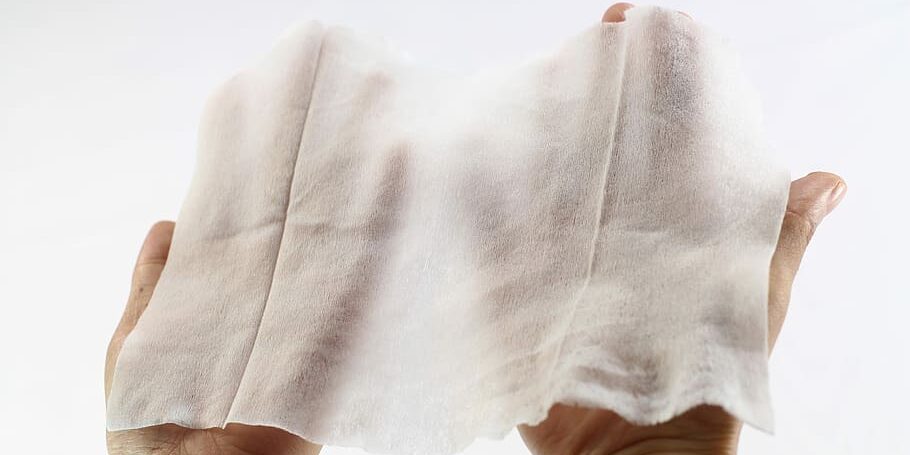There are a plethora of sanitization products in the market today, even larger than before due to the COVID-19 pandemic. As sanitization becomes a part of our daily routines, the dire need for quick and effective methods is on the rise. Disinfectant wipes, or, alcohol wipes, are an easy way to sanitize surfaces quickly. According to health authority data, wipes are as effective at killing germs as any other sanitizing gel, liquid, or spray product.
But, with the large variety of wipes to pick from on the supermarket shelves, which should you choose? What is the difference between your regular pack of natural wipes lying in your cupboard and the disinfectant wipes? Do they work the same way?
Disinfectant wipes with Alcohol
All kinds of sanitizing wipes available in the market contain some type of cleaning chemical. The difference between the sanitizing capacity of each product lies in its composition.
The Centers For Disease Control and Prevention (CDC) and World Health Organization (WHO) recommend sanitization products with at least 60% alcohol by volume (Ethanol or IPA) for effective protection from disease-causing germs. Alcohol kills bacteria and viruses by dissolving the membranes on the surface of the cells.
A product used for disinfection kills germs on the surface it is used on. However, products with non-disinfection strength only slow down the growth of germs.
Disinfectant wipes contain sufficient strength of alcohol and other additives that kill germs on high-touch surfaces. These can be used to effectively disinfect home electronics, restaurants, supermarket touch-surfaces, and also medical facility working surfaces.
Non-alcohol wipes for cleaning
Wet-wipes or natural wipes are the regular, non-alcohol wipes available for purchase at the personal care section at a supermarket. Skin cleansing wipes and make-up wipes also fall into this category.
Natural wipes contain a small amount of detergent and other cleansing agents suitable for use on skin. However, these wipes are not effective for the sanitization of inanimate surfaces. Wet-wipes can only inhibit the growth of germs, but cannot kill them.
They contain essential oils and perfumed compounds to make more palatable for daily personal care. Although popularly used for the handiness, cleansing wipes are not very effective for cleaning high-touch surfaces like door handles, bathroom counters, kitchen utilities, electronic touchpads, etc.
Baby wipes
Also known as water wipes, these are mild fiber wipes designed to be suitable on sensitive baby skin. They contain baby cleanser to remove dirt and oily residue and water-based lotion to prevent rashes.
Baby wipes cannot be used to disinfect high-touch surfaces since they do not contain suitable cleansing chemicals.
Why Disinfectant wipes?
Sanitizing wipes, or, disinfectant wipes contain, along with alcohol (at least 60% by volume) other additives like chlorhexidine and benzalkonium chloride that provide protection from a variety of disease-causing germs. Thus, they are strengthened with the capacity to sanitize high-touch surfaces like door handles, touch-pads, equipment, work surfaces, etc. in crowded public spaces. Disinfectant wipes are as effective as hand rubs for the extermination of disease-causing microbes. In fact, high alcohol content translates into greater germ-killing power.
These kinds of wipes also contain a bit of detergent for cleaning oily debris. Although the volume of alcohol in disinfectant wipes is potent to destroy the cell membranes of the microbes, it is not strong enough to affect human skin cells. They are made of cellulose, polyester, or other absorbing fabric that is designed to collect the germ debris.
However, care must be taken to make sure that the industrial-grade disinfectant wipe does not touch the eyes or mouth. These products must be strictly kept out of the reach of children.
On average, one disinfectant wipe can be used to clean 1 to 2 square feet of the surface.
Planning a cleaning regime
Disinfectant wipes are only effective in the absence of visible debris like food or soil. So, the surface to be disinfected must be cleared of large waste particles before using the wipe
Many natural wipes can be used to clean the visible debris followed by the use of a disinfectant wipe. After that, the surface must be left for a few minutes to air-dry and not rubbed with a dry cloth.
All wipes should be disposed of in a manner indicated in the back of the package. Disposing of through a pipe can clog it. There are many bio-degradable wipes available that disintegrate in nature and do not leave a positive carbon footprint.
If you have allergies or health conditions, consult your doctor before using a natural or disinfectant wipe on a daily basis.
Sources:
#Disinfection #DisinfectantWipes #SanitizeEverything #PreventTheSpread #COVID19 #coronavirus #AxioBio #Sanitizer #Sanitize #Hygiene #Clean
Disclaimer: Issued in public interest by Axio Biosolutions Private Limited. Kindly check the official guidance on WHO for more information on infection prevention and control of COVID-19
 A collaborative study with Harvard Medical School
A collaborative study with Harvard Medical School






